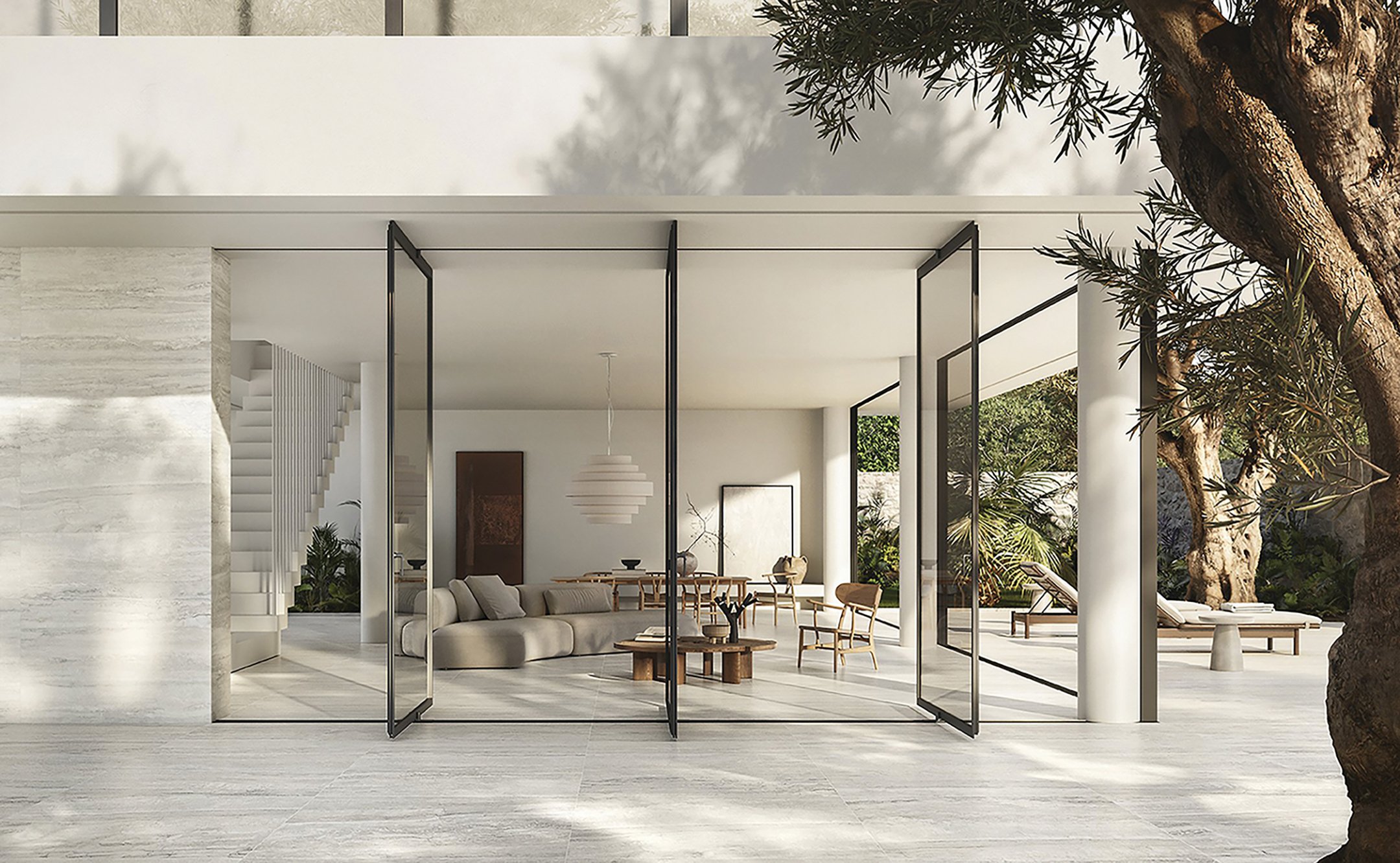
DESIGN | BOUNDLESS LIVING
DESIGN | BOUNDLESS LIVING
Words by Georgia Austin.
Seamless transitions between indoors and outdoors are becoming a defining feature of modern luxury living.
In a climate that invites us to revel in the outdoors, blurring the boundaries between the two is an opportunity
to not only bring the outdoors in but also to take the indoors out. Making exterior spaces a true extension of
the home requires an effortless flow, continuity of flooring and furnishing, and thoughtful lighting and planting.
INVISIBLE BOUNDARIES
Wall-to-wall and floor-to-ceiling sliding, folding, or pocketing glass doors not only eliminate physical and visual boundaries but also flood interiors with natural light, transforming terraces, patios, or gardens into inviting spaces that blend seamlessly with the home’s architecture. Choose low-E glass that reflects heat to keep interiors cooler and reduce air-conditioning costs.
ILLUMINATE EXTERIORS
To maintain the connection between indoor and outdoor spaces after dark, use thoughtful lighting to create a warm, cohesive glow. Wall and overhead lights work well for seating and dining areas, but you can add depth to the scene with up-lights trained on trees or focal points and ground-level lights to illuminate walkways.
COHESIVE FOUNDATIONS
Flooring is key to achieving a smooth indoor-outdoor flow. Extending the same stone, wood or tile from interior to exterior creates visual harmony, uniting the two. Opt for lighter colours that do not absorb heat and matt, non-slip finishes for safety, and look for materials that look equally at home inside and outside, but are engineered for exterior use.
ECHO INTERIOR STYLE
To make outdoor spaces a true extension of your living room, select furniture that mirrors the interior design language. Seek out weather-resistant pieces in styles and materials that reflect your interior aesthetic, and enhance them with rugs, cushions, and throws in complementary colours for a living-room-in-paradise look.
TROPICAL TOUCHES
Bringing a little nature in with greenery and organic materials will pave the way and prepare the senses for the transition to the outdoors. Select resilient plants that echo outdoor flora, like philodendrons, palms, or bird-of-paradise. To add a soft, organic touch, incorporate natural materials such as reclaimed timber and driftwood.
A well-designed indoor-outdoor transition does more than expand your living space – it invites the beauty of the natural world into your daily routine, enriching your home and lifestyle with the best of both worlds.


